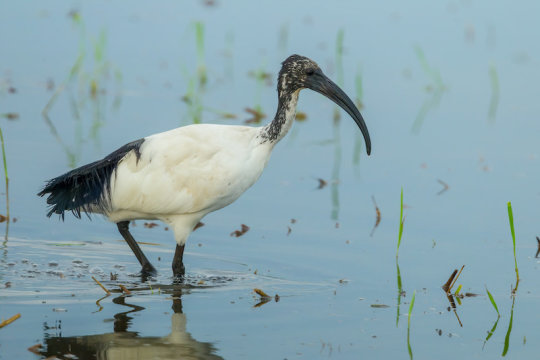[ad_1]
In ancient Egypt, Sacred Ibises were collected from their natural habitats to be ritually sacrificed, according to a study released November 13, 2019 in the open-access journal PLOS ONE by Sally Wasef of Griffith University, Australia and colleagues.
Egyptian catacombs are famously filled with the mummified bodies of Sacred Ibises. Between around 664BC and 250AD, it was common practice for the birds to be sacrificed, or much more rarely worshipped in ritual service to the god Thoth, and subsequently mummified. In ancient sites across Egypt, these mummified birds are stacked floor to ceiling along kilometers of catacombs, totaling many millions of birds. But how the Egyptians got access to so many birds has been a mystery; some ancient texts indicate that long-term farming and domestication may have been employed.
In this study, Wasef and colleagues collected DNA from 40 mummified Sacred Ibis specimens from six Egyptian catacombs dating to around 2500 years ago and 26 modern specimens from across Africa. 14 of the mummies and all of the modern specimens yielded complete mitochondrial genome sequences. These data allowed the researchers to compare genetic diversity between wild populations and the sacrificed collections.
If the birds were being domesticated and farmed, the expected result would be low genetic diversity due to interbreeding of restricted populations, but in contrast, this study found that the genetic diversity of mummified Ibises within and between catacombs was similar to that of modern wild populations. This suggests that the birds were not the result of centralized farming, but instead short-term taming. The authors suggest the birds were likely tended in their natural habitats or perhaps farmed only in the times of year they were needed for sacrifice.
The authors add: “We report the first complete ancient genomes of the Egyptian Sacred Ibis mummies, showing that priests sustained short-term taming of the wild Sacred Ibis in local lakes or wetlands contrary to centralised industrial scale farming of sacrificial birds.”
Story Source:
Materials provided by PLOS. Note: Content may be edited for style and length.
[ad_2]















